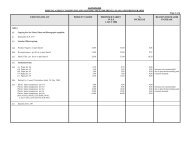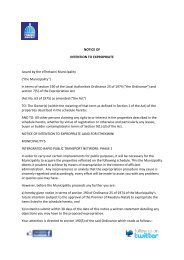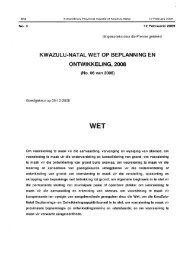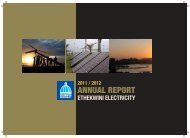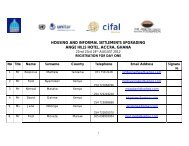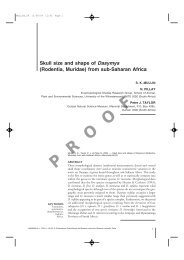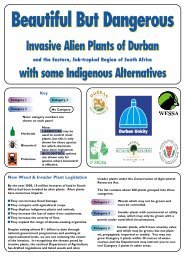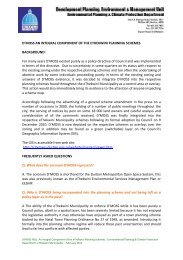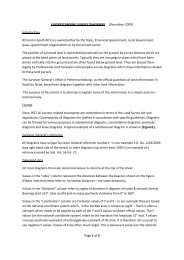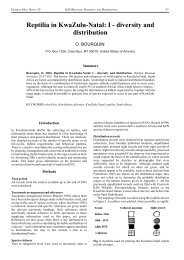Integrated Transport Plan.pdf - Durban
Integrated Transport Plan.pdf - Durban
Integrated Transport Plan.pdf - Durban
You also want an ePaper? Increase the reach of your titles
YUMPU automatically turns print PDFs into web optimized ePapers that Google loves.
5.6.7 Individual Routes Evaluation<br />
The area to area corridor analysis provided a good overview of service<br />
utilisation throughout the Municipality but it was not detailed enough to<br />
consider applications for route licences. The OLS therefore evaluated<br />
each individual route giving comments and recommendations for each.<br />
In respect of the taxi industry overtrading was evident, therefore<br />
recommendations only supported the issuing of new licences in proven<br />
cases of shortage of capacity on a particular route.<br />
Of the 1064 taxi routes with survey data, only 103 were possibly eligible for<br />
additional licences, depending on available rank capacity. In respect of the<br />
possible use of larger vehicles, 144 routes had volumes appropriate for<br />
35 seaters and 15 for standard buses.<br />
Currently five bus contracts cover roughly two thirds of all bus services and<br />
their peak hour utilisation is slightly better than all services; utilisation of<br />
non-contract services being 70%. The number of peak hour trips per<br />
contracted route however averages a low 1.85 which reflects a low<br />
frequency of service. For this reason, many routes would be better served<br />
by 35 Seaters and even 18 Seaters, to provide better frequency for<br />
passengers.<br />
Based on the analysis of contract and non-contract bus service, the<br />
following table shows the number of routes where alternative lower capacity<br />
modes are justifiable for a better service to passengers and/or additional<br />
licences could be warranted.<br />
Operator Surveyed<br />
Suitable for<br />
Routes 35 Seater 18 Seater<br />
Contract Operators<br />
Non-contract Operators<br />
693<br />
329<br />
Need<br />
More<br />
eThekwini <strong>Integrated</strong> <strong>Transport</strong> <strong>Plan</strong><br />
Summary Report<br />
5.22<br />
Public <strong>Transport</strong><br />
321<br />
108<br />
263<br />
118<br />
All Operators 1022 429 381 33<br />
Overall, rail service is badly underutilised. The largest number of peak hour<br />
passengers on any one service is 7000, from Umlazi to <strong>Durban</strong> in the<br />
morning peak. Even so, average utilisation on this route is only half of<br />
capacity. Only 3 other routes with more than one train have utilisations<br />
over 50%. Clearly this highlights the need for the various public transport<br />
modal, system and support strategies to support rail in strategically located<br />
parts of a fully integrated system.<br />
23<br />
10<br />
Minibus taxi<br />
evaluation<br />
Bus evaluation


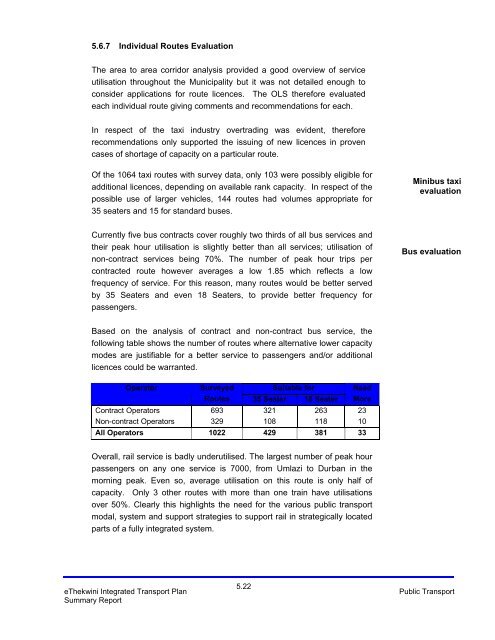
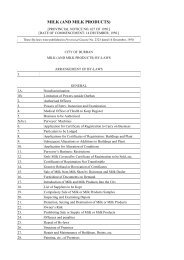
![INK Environmental Sustainability Booklet [19 MB] - Durban](https://img.yumpu.com/22025104/1/190x136/ink-environmental-sustainability-booklet-19-mb-durban.jpg?quality=85)

